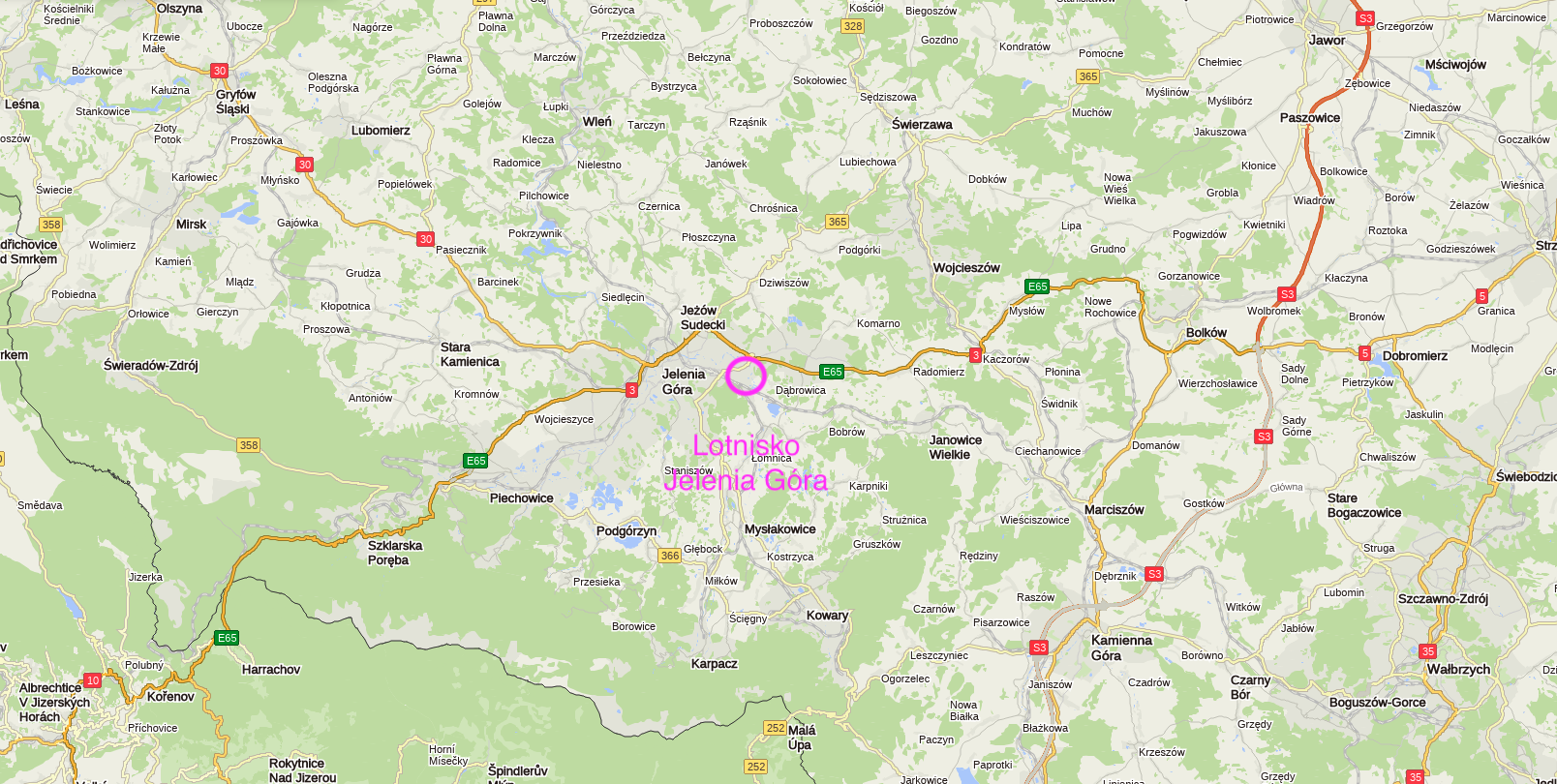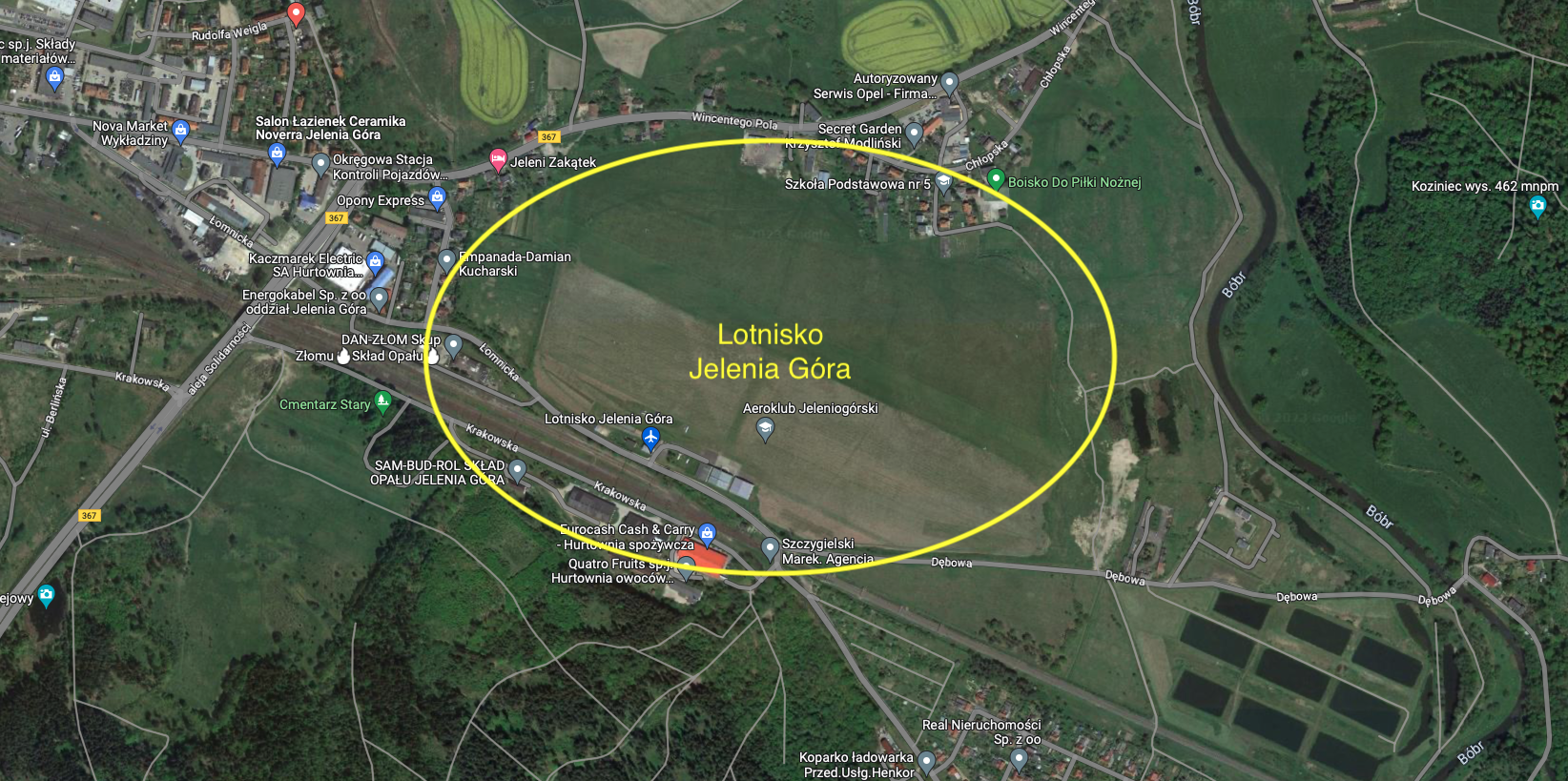Jelenia Góra. 2023-01-20
Jelenia Gora Airport.
Geographic coordinates: 50.898N 15.784E. Elevation 342 m (1,122 ft).
The Jelenia Góra airport is used by the Jelenia Góra Aeroclub. The airport is civil and sports. ICAO code – EPJG. The airport is located at an altitude of 342 m above sea level.
The landing field is ground. The following RWYs are designated: The first RWY is in the direction of 104/284 (10/28), has dimensions of 610 m x 185 m. The second RWY is in the direction of 122/303 (12/30), 420 m x 100 m. The third RWY is in the direction of 040/220, 260m x 100m.
Contact by phone +48 75 752 6020 Aeroklub Jeleniogórski. Lomnicka Street.
History of the airport in Jelenia Góra.
The history of the airport began in Germanic times, in the 1920s, when Jelenia Góra was called Hirschberg. It was a period of development of sports and tourist aviation, and above all, air transport. The initiative to build the airport came from the city and county authorities and was supported by the Chamber of Commerce and Industry, Riesengebirgseverein (Karkonosze Society). Private entrepreneurs from the tourism industry joined the initiative. Jelenia Góra had a population of about 35,000 at the time, and the community readily supported the airport construction project.
In 1923, a favorable site was found near the Jelenia Góra railway station. These were the so-called Garbary (Hartau), which were used as a military training ground. It was planned to build a hangar, a workshop, and a gas station. Poor finances postponed investments for the following months. On August 26, 1926, an air show was organized and plans were announced to launch commercial flights to Wrocław (Breslau) and Gliwice (Gleiwitz). Appropriate licenses have been obtained. A Junkers F-13 aircraft was leased, which took five passengers and one pilot on board. The plane was made of metal, so it tolerated difficult weather conditions and tolerated dirt runways well. Junkers F-13 aircraft was also operated in Poland. There were also flights from Jelenia Góra to Berlin, Zgorzelec, Görlitz, Nysa and Gliwice. There were 3-4 flights daily from/to the airport.
After a few years, the profits were minimal. Passengers were more willing to use rail transport, which was cheaper and was not affected by the weather. In addition, in the Sudetes, many railway lines were electrified and trains ran more frequently. More and more paved roads were also built. Passenger flights were limited to tourist and business flights to Wrocław to the Gądów Mały airport. You could fly in the morning and come back in the evening. The conducted landing test of large aircraft was unfavorable. RWY was short and there were numerous terrain obstacles nearby.
In 1935, the aviation authority in Berlin reformed the regulations for commercial airports, increasing the requirements. As a result, several airports were deleted from the records, including the airport in Jelenia Góra. As a result of the intervention of the airport authorities, tourist flights to Wrocław (Gądów Mały) were retained, but only with small planes. These flights were maintained until 1939.
As a result of the stupidity of the Germans who started the Second World War with their Muscovite brothers, they started the Second World War and lost the Sudetes. After World War II, the idea of opening a commercial airport in Jelenia Góra is revived every few years. However, all analyzes show that such an investment is unprofitable.
The airport in Jelenia Góra is perfect for sport aviation, especially gliding. There are good thermal conditions here, and the surrounding terrain and obstacles have a great impact on improving pilot pilot qualifications. Terrain obstacles include the following mountains: Koziniec 462 m, Jeleniec 417 m, Grodzisko 399 m, Wzgórze Partyzantow 412 m, Wzgórze Zamkowe 407 m, Zamkowa Góra 449 m. Other obstacles include: three chimneys, high and medium voltage lines, traction railroad tracks, church towers, tall trees and nearby buildings.
Jeleniogórski Flying Club has trained many glider, airplane and parachute champions. PZL An-2, PZL-104 Wilga and other aircraft were operated at the airport.
Written by Karol Placha Hetman


